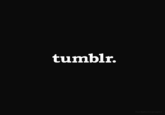Net Art
Part of a series on Fan Art. [View Related Entries]
[View Related Sub-entries]
This submission is currently being researched & evaluated!
You can help confirm this entry by contributing facts, media, and other evidence of notability and mutation.
About
Net Art, also referred to as Internet Art, is a genre of fine art that uses networked interfaces as medium or for distribution. This can include work that is browser-based and created with code, or work that was created with other software or algorithms and is either exhibited or distributed with networked interfaces, often in combination with interactivity. While net art has no defined structure, the capabilities of commercially available computing equipment, network speed, and common software have often helped to define the art genre's aesthetics.
History
Since net art is a new genre, and one that uses new technologies, its history is often shifting. Currently, one of the first known works to use the public computer network we now call the Internet was perhaps Vera Frenkel's "String Games," where the artist conducted a national game of human-sized Cat's Cradle via networked video transmission.

The term "Net Art" was coined in 1995 by the Slovenian artist Vuk Cosic, who opened a corrupted email file and was only able to make out those two words. He went on to co-found the group net.art, a cohort of artists working in the form. The term then spread to envelop the range of work being developed in the 1990s by a variety of artists who were often working in tandem with new organizations and institutions like Rhizome, Syndicate, and Nettime, all early mailing lists devoted to Internet Art.
In the early 2000s, Net Art began to appear in brick and mortar galleries and museums worldwide in many different permutations. Upon the advent of social media networks like Tumblr, Flickr, Livejournal, and Instagram, net art began to spread and be spread by users and fans, who formed many alternative communities around specific types, including Vaporwave, Glitch, and Webpunk.
Net art is often created with visualization-friendly coding systems like Javascript, JQuery, and WebGL, or with image editing and animating software like the Adobe Suite, or 3D software like Mya, Cinema 4D, and Blender. In addition, a large part of the net art aesthetic involves re-appropriating software and hardware tools for artistic use.
Online Presence
Net art has no central hub, but rather spreads through online discourse in a variety of ways. Net-Art.org is a publication that discusses the format, but aesthetically, it's rooted more in algorithm than texture. Rhizome.org and its tool, the Artbase, archive works of net art for the future, often showing them in emulator forms. In addition, Archive.org also works as a repository of work made by artists who host it on a domain.
Many net artists host their work on their own web sites, but also use social networks to distribute it to a wider audience. Tumblr is an especially highly-used site, with the #net art tag accumulating many posts per minute and some popular blogs, like Fuck Yeah Net Art, distribute individual pieces to a wide audience.
Various Examples
Net art is often not in the form of static or still images, so many of these images below are screenshots of dynamic work, and should not be considered representative of the form as a whole.






Search Interest
External References
[1] Wikipedia – Internet Art
[2] Fondation Langlois – Caroline Langill, Shifting Polarities; Electronic media in 1974
[3] Cyberhouse – Web Work: A History of Internet Art
[4] Netspecific – What Is Net Art?
[8] Tumblr – Fuck Yeah Net Art
[9] Tumblr – tags: net art
[10] DeviantArt – tags: net art
Recent Videos
There are no videos currently available.












Top Comments
Oshare "Stylish" Bones
Dec 03, 2015 at 03:46PM EST
Real Waluigi
Dec 04, 2015 at 09:05AM EST in reply to